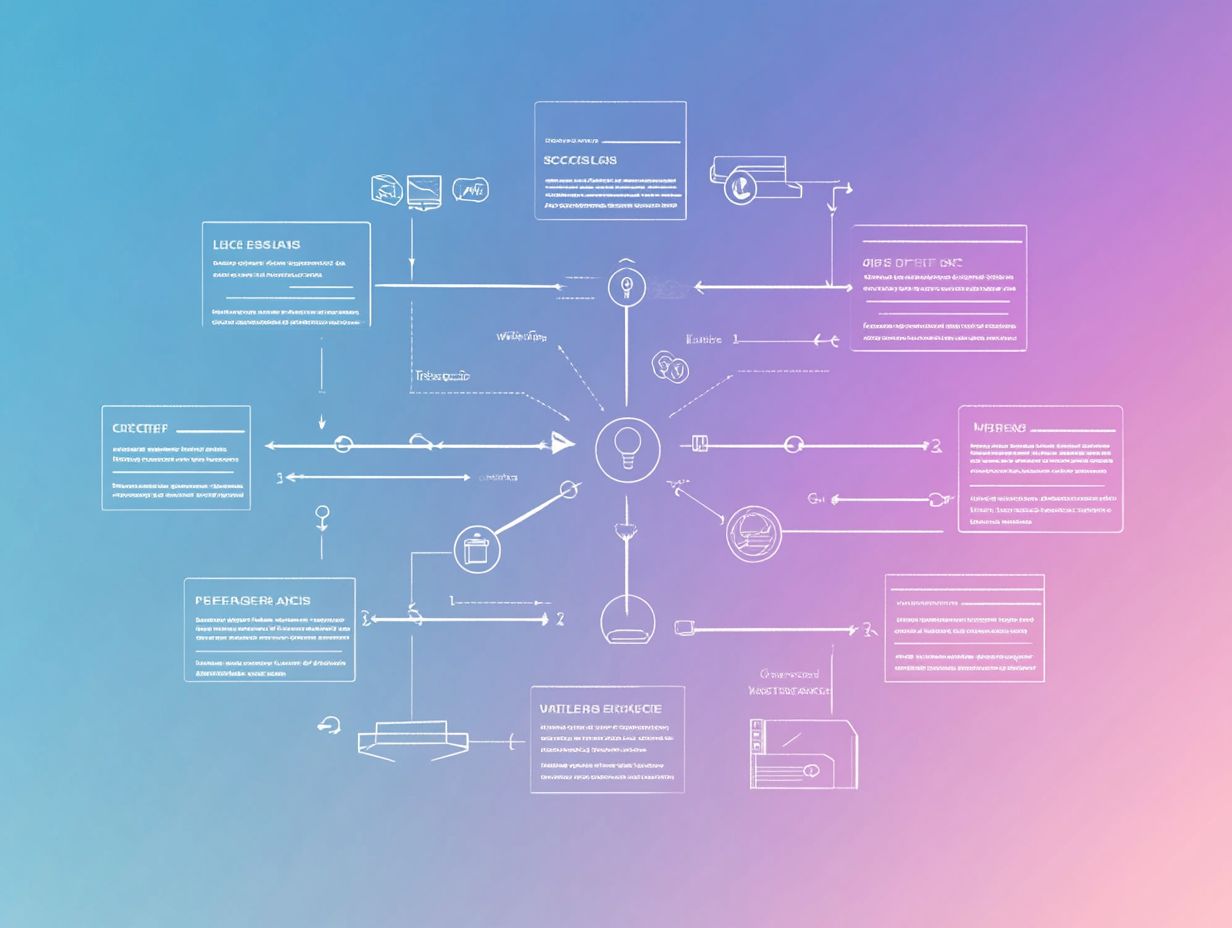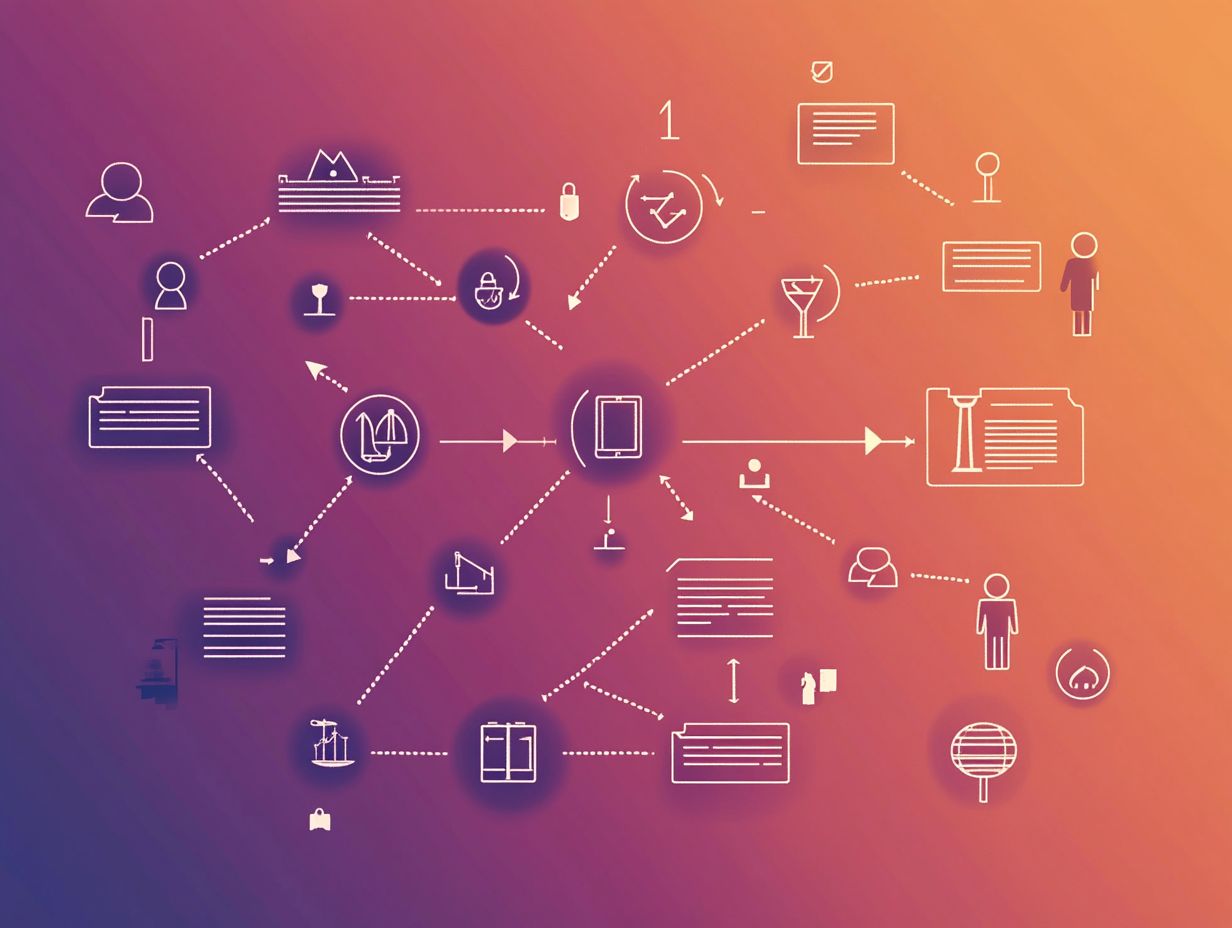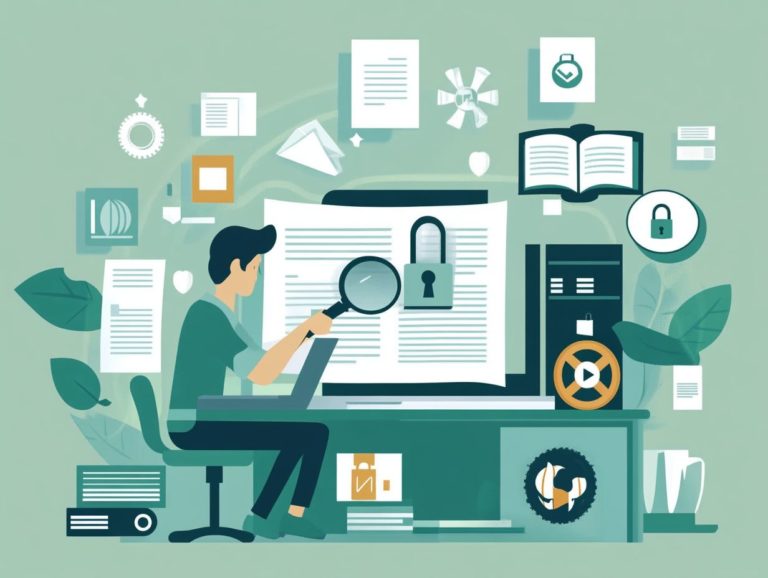What Is the Process for IP Licensing?
Intellectual property (IP) licensing serves as a crucial asset in today s competitive landscape, empowering you to monetize your innovations while safeguarding your rights.
This article delves into the different types of IP licenses patents, trademarks, and copyrights while outlining the numerous advantages that benefit both licensors and licensees.
It guides you through the essential steps of the IP licensing process, from pinpointing the right IP to effectively monitoring the agreement.
Whether you re a creator or a business owner, understanding IP licensing can open up amazing opportunities for growth and collaboration.
Contents
Key Takeaways:

- IP licensing is the process of granting someone else the legal right to use your creative works for a specific purpose.
- There are three main types of IP licenses: patent, trademark, and copyright.
- The process of IP licensing involves identifying the IP, negotiating and drafting the agreement, and monitoring and enforcing its terms.
What is IP Licensing?
IP licensing is the process where you, as the owner of intellectual property (IP), grant permission to another party to use, reproduce, or distribute your creative works think patents, copyrights, trademarks, and trade secrets all under specific licensing terms.
This business agreement allows you to monetize your creative works while ensuring legal protection and compliance. By engaging in IP licensing, you can protect your ownership rights while also fostering innovation and collaboration within creative industries.
Clearly defining the scope of usage whether you opt for an exclusive or non-exclusive agreement maximizes the economic value of your assets and helps you effectively manage ownership structures.
This system naturally lends itself to the development of joint ventures and strategic partnerships, enabling the sharing of resources and capabilities. The licensing process not only strengthens your individual enterprise but also contributes significantly to the broader economy by encouraging the proliferation of new ideas and products.
Understanding the nuances of this arrangement is crucial for both licensors and licensees, as it governs the royalties and usage rights essential to business success.
Types of IP Licenses
You ll encounter various types of IP licenses, such as patent licensing, trademark licensing, and copyright licensing. Each of these licenses is carefully crafted to address specific creative works and grants distinct levels of rights to licensees.
Patent Licensing
Patent licensing entails granting rights from a patent holder to a licensee, permitting them to make, use, or sell a patented invention in exchange for financial remuneration, often through royalty payments.
This process fosters innovation and opens doors for collaboration and revenue generation across various industries, particularly in technology and pharmaceuticals.
The licensing journey typically begins with identifying the type of patent at play whether it s a utility, design, or plant patent each presenting its unique set of considerations.
Negotiating these agreements can be complex and requires thoughtful discussions about scope, exclusivity, and duration to ensure that proprietary information remains secure.
As you engage in these negotiations, it s essential to navigate the legal implications of the agreement, aiming for a framework that effectively balances profitability with the safeguarding of intellectual property rights.
Trademark Licensing
Trademark licensing enables you, the licensee, to leverage a brand’s trademark under carefully crafted terms, significantly influencing brand identity and market share in a competitive landscape.
By establishing a well-structured licensing agreement, you and the licensor can enjoy economic benefits while enhancing the brand s visibility across various markets.
The licensing process requires you to negotiate terms that maintain the brand’s integrity, ensuring you uphold the high standards that the original trademark represents.
This strategic approach not only protects brand identity but also builds trust among consumers, who link licensed products with quality and reliability.
By tapping into new revenue streams and expanding your reach, you can create a robust economic advantage in today’s dynamic commercial environment.
Don’t miss out on the chance to protect your ideas and generate income!
Copyright Licensing

Copyright licensing means getting permission from the creator to use their work, which includes software, novels, and music, all under specific agreements.
This mechanism protects the creative efforts of individuals and facilitates the legal distribution and adaptation of their works across various platforms.
A wide range of artistic creations such as audiovisual projects, visual arts, and written content are covered by these protections. This ensures that original creators retain control over how their ideas are utilized.
The implications of ownership rights are significant. They can directly affect the financial benefits for artists and creators while fostering innovation in creative industries.
By understanding the nuances of these licensing agreements, both copyright holders and users like you can navigate the complex world of intellectual property effectively.
Benefits of IP Licensing
Unlock incredible opportunities with IP licensing! It offers advantages for both licensors and licensees.
Licensing enhances revenue streams, facilitates smoother market entry, and ensures robust protection of intellectual property rights while delivering significant economic value.
For the Licensor
As a licensor, IP licensing opens up new revenue streams by allowing others to use your intellectual property in exchange for financial compensation. This enhances the overall economic value of your creations.
This strategic approach boosts your immediate cash flow and helps establish secure legal protections, ensuring you maintain control over how your assets are used.
By entering into well-structured agreements, you can expand your market reach, tapping into new demographics and geographical areas.
This helps your brand become more recognizable and fosters customer loyalty, while also creating opportunities for further innovation and product development.
Ultimately, this translates into long-term financial benefits and a stronger presence in the market.
For the Licensee
You gain significantly from IP licensing! It opens the door to established brands and technologies, enhancing your market share and competitive edge without the burdensome need for extensive research and development.
In this ever-evolving landscape, you can use existing intellectual property to create innovative products that resonate with consumers. By navigating the complexities of licensing carefully, you streamline your entry into new markets.
This cultivates valuable partnerships that facilitate resource sharing and knowledge transfer.
Through carefully crafted agreements, you can define favorable licensing terms that protect your interests and ensure compliance, leading to a more robust financial return. This proactive approach maximizes the potential of your partnerships, turning IP assets into tangible success.
The Process of IP Licensing
The IP licensing process includes several essential steps.
- First, identify the intellectual property you wish to license.
- Next, negotiate and draft a comprehensive licensing agreement that clearly outlines the rights granted and obligations of both parties.
This meticulous approach ensures everyone is on the same page, fostering a solid foundation for collaboration.
Step 1: Identifying the IP to License

The first step in your IP licensing journey is to identify the specific intellectual property you wish to license. This could include patents, trademarks, copyrights, or trade secrets each representing valuable proprietary information.
You can streamline this initial identification through methods like comprehensive audits, specialized software tools, and market assessments that evaluate the potential value of these assets.
Understanding the significance of IP rights is crucial; they safeguard your interests and open doors for monetization opportunities.
The implications of your licensing agreements depend heavily on these assessments. Accurate identification shapes your negotiation strategies and defines the terms of use, ensuring both parties appreciate the true worth of the intellectual property involved.
Step 2: Determining the Scope of the License
It s crucial to define the scope of the license. This outlines the specific rights granted under the agreement, such as territory, duration, and permitted activities.
Also, consider any restrictions. These limit how the licensed entity can use the intellectual property.
Exclusivity can boost the value of the deal. It allows only one party to benefit within a designated area.
Explore different revenue options like royalties or upfront fees. This can maximize financial benefits for both parties.
Understanding these aspects ensures the licensing terms are clear and align with everyone’s interests.
Step 3: Negotiating and Drafting the License Agreement
Negotiating and drafting the license agreement is a vital step. Engage IP attorneys to make sure all terms are clear and legally binding.
Know the key components of negotiations. Financial terms, royalty structures, and rights being granted are all important.
Legal counsel is essential. Their expertise helps create enforceable agreements and reduces potential disputes.
This collaborative approach results in a more secure licensing arrangement for all involved.
Step 4: Implementing the License Agreement
Implementing the license agreement means following the established framework. Ensure compliance with the terms and monitor the use of the licensed property.
Set up strong monitoring mechanisms. Regular audits and reporting can help identify any issues.
Open communication between both parties promotes transparency. It encourages quick resolution of problems before they escalate.
By prioritizing these steps, you can navigate the complexities of licensing and enhance trust and compliance.
Step 5: Monitoring and Enforcing the License Agreement
Monitoring and enforcing your license agreement is key. This protects intellectual property rights and helps address any licensing challenges.
Implement clear communication strategies and conduct regular audits. This ensures all terms are followed as agreed.
Use legal protections like contracts and trademarks to strengthen your position. They help defend against potential breaches.
By taking these actions, you maintain the integrity of your licenses. You also clarify expectations for compliance.
Involve legal experts who specialize in licensing. Their support can resolve disputes quickly and fairly, protecting everyone s interests.
Frequently Asked Questions

What is IP licensing?
IP licensing is a legal agreement where one party (the licensor) allows another party (the licensee) to use their intellectual property. This is done for a specific purpose and time, usually in exchange for payment.
What are the benefits of IP licensing?
IP licensing helps companies earn more revenue from their intellectual property without needing to invest in production or marketing. It also allows them to access new markets while managing risk.
How do I know if I need a license for IP?
Want to use someone else’s intellectual property like a trademark or a patent? You will likely need a license! Research the legal requirements before you begin.
What is the process for obtaining an IP license?
First, identify the IP you want to license and who owns it. Negotiate the terms, including how you can use it, for how long, and any fees.
Once both sides agree, write down your agreement. Both parties should sign it to make it official.
What happens if I break the terms of an IP license?
If you break the terms, the owner may take legal action against you. To avoid problems, carefully review and follow the license agreement.
Can I renew or end an IP license?
Yes! You can renew or end a license based on what’s in the agreement. Some agreements might have a renewal option or an expiration date.
Others may allow termination if certain conditions are met. Always check the agreement terms before signing!






